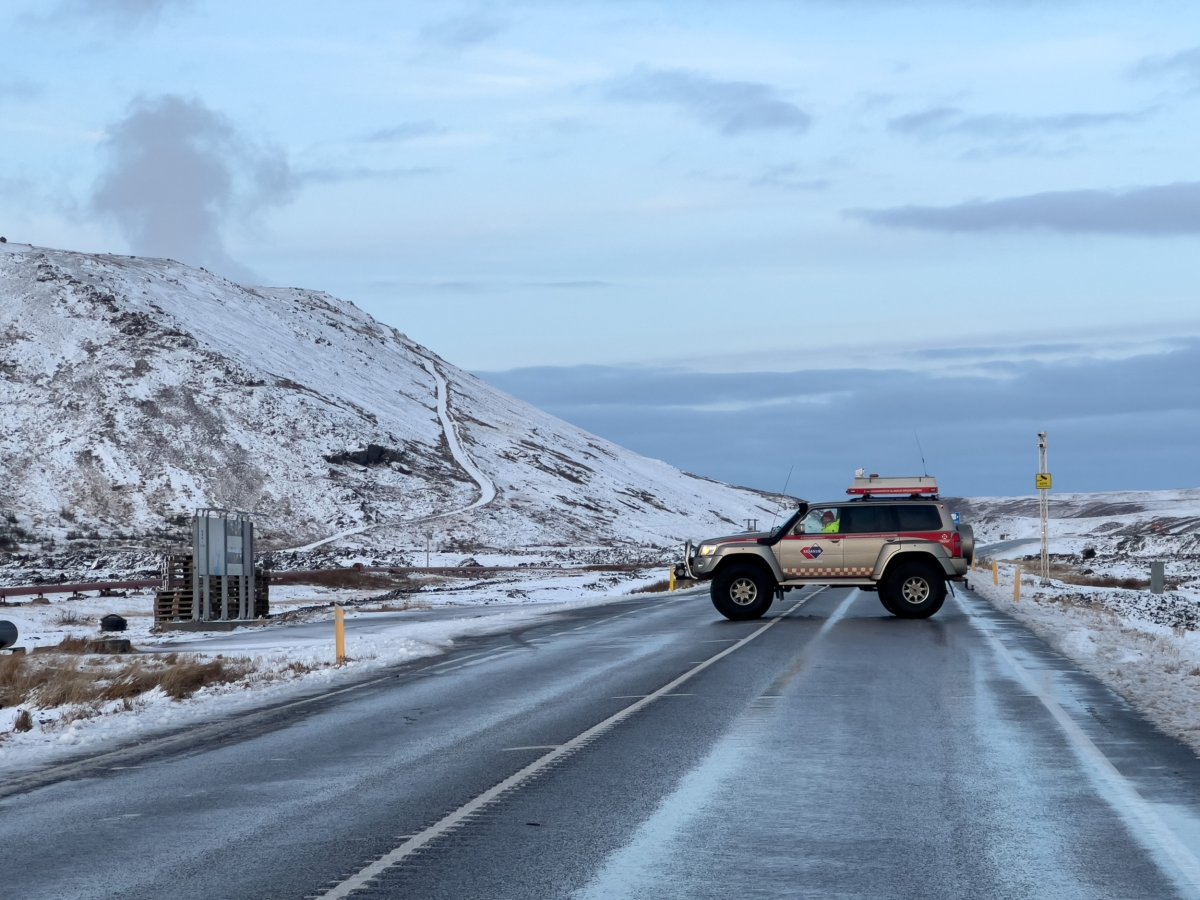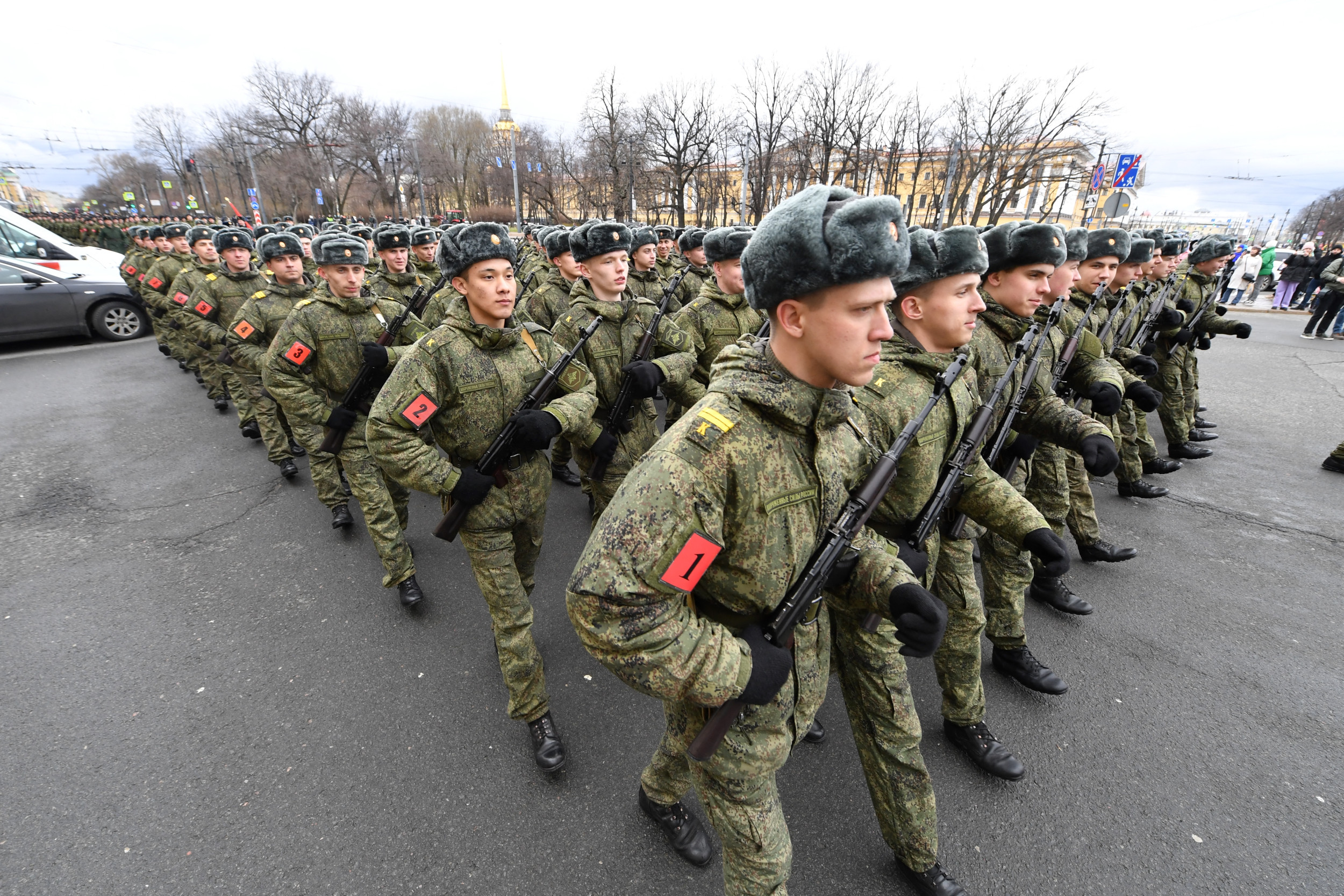A decrease in seismic activity and deformation of the Earth's crust under Iceland has prompted scientists to lower their expectation of an eruption occurring following concerns one was likely to happen imminently.
In an update on Wednesday, the Icelandic Meteorological Office said the rate of recorded earthquakes had slowed over the previous two days, with 340 registered on Tuesday and a further 150 between midnight and 12 p.m. ET that day. It noted that most of the tremors had been of a magnitude less than 1.
Between 1,500 and 1,800 earthquakes a day were being recorded from November 10 until last week, when adverse weather interfered with seismic recording equipment. The tectonic activity has seen cracks appear in the ground and prompted local authorities to evacuate the coastal fishing town of Grindavik, which sits near the course of the dike.
The earthquakes have mostly occurred over and around the site of a magma intrusion or dike—a rapidly forming, vertical sheet of molten rock that has pushed through a weak point in the Earth's crust, and is estimated to be around 9.3 miles long. Its path runs alongside Grindavik, on a southwesterly peninsula on Iceland's main island.
Experts believe that, if an eruption were to occur, it would most likely take place somewhere along the path of the dike. The Icelandic Met Office has previously said that the area with the "highest likelihood" of eruption was the middle part of the dike, between the Hagafell and Sylingarfell mountains near Grindavik.
In recent weeks, authorities in Iceland have built earth walls, along with conduits and canals, around Grindavik and Svartsengi, a nearby geothermal power plant, in a bid to direct lava away from buildings in the event of an eruption.
"Despite the slowing down of seismic activity and deformation, an eruption is still considered to be possible," the Icelandic Met Office said on Wednesday. "If an eruption does occur, the location thought to be most likely is east of Sylingarfell."
"On November 24, the earthquake activity and ground movements came to a sudden halt," Haraldur Sigurdsson, an Icelandic volcanologist and an emeritus professor of geophysics at the University of Rhode Island, told Newsweek.
"There is now a tremendous sense of relief, and hope that this episode has reached its end. But in the big picture, we know that this is not the end of activity on the Reykjanes peninsula."
A sudden shift in the North American tectonic plate away from the Eurasian plate is thought to have allowed magma to push upwards through a rift that runs under Iceland. Sigurdsson said the old rift near Grindavik was reactivated and "it was feared that the crustal rifting would lead to a volcanic eruption."
"History tells us that the rifting, plate motion and volcanic activity is very episodic here, with intense periods of activity, followed by 800 to 1,000 years of quiet," he said. "The quiet period has now come to an end and we are entering into an episode of rifting and volcanism on Reykjanes.
"We must keep in mind that during the previous dormant period, most of the infrastructure of Iceland has developed on the Reykjanes peninsula, including the capital, Reykjavík."

"The probability of Iceland erupting has decreased, but by no means to zero," Jussi Heinonen, a geophysics researcher at the University of Helsinki in Finland, commented, adding that magma "continues to accumulate in the crustal fissure," in particular in the central section to the northeast of Grindavik—which has seen a high concentration of seismic activity.
Meanwhile, Shawn Willsey, a geology professor at the College of Southern Idaho and an author, said: "I think everyone would agree that, based on what we saw a few weeks ago, the chance has dropped a lot[...]but we still have magma moving in the subsurface northeast of Grindavik.
"It's not moving quickly; it doesn't seem to be building at this point towards an eruptive episode—in terms of moving towards the surface—but it definitely warrants caution."
At the same time, a pool of horizontal magma has pushed a region around 6 miles across upwards, which has occurred previously and is thought to be supplying magma into the dike.
In its latest update, the Icelandic Met Office said the rate of uplift over the horizontal intrusion was decreasing but was still ongoing, at a rate of around 1 centimeter a day. It produced charts based on GPS measurements which suggest that since November 10, there has been a crustal uplift of over 20 centimeters (8 inches).
Update 11/30/23, 11:15 a.m. ET: This article was updated to include commentary from volcanologist Haraldur Sigurdsson.
Uncommon Knowledge
Newsweek is committed to challenging conventional wisdom and finding connections in the search for common ground.
Newsweek is committed to challenging conventional wisdom and finding connections in the search for common ground.
About the writer
Aleks Phillips is a Newsweek U.S. News Reporter based in London. His focus is on U.S. politics and the environment. ... Read more
To read how Newsweek uses AI as a newsroom tool, Click here.








